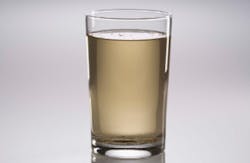COLUMBIA, S.C. — University of South Carolina engineers have developed one of the thinnest and most selective membranes ever made, which could potentially be used for water purification applications, especially in hydraulic fracturing, according to a press release.
The membrane's selectivity is based on molecular size; hydrogen and helium can pass through easily but carbon dioxide, oxygen, nitrogen, carbon monoxide and methane pass through more slowly, according to the release.
"The membrane behaves like a sieve," said Miao Yu, a chemical engineer in USC's College of Engineering and Computing, who led the research team.
The 1.8 nanometer membrane was created with overlapping flakes of graphene oxide over a porous aluminum oxide support; researchers were able to eliminate "inter-flake" leaks that would previously allow gas molecules to leak through, the release reported.
In addition to water purification, continued the release, the membrane could also be used to separate carbon dioxide as a greenhouse gas from other gases, and to purify hydrogen from gas mixtures for energy use.
To read the full release please visit: http://www.sc.edu/news/newsarticle.php?nid=6416.


